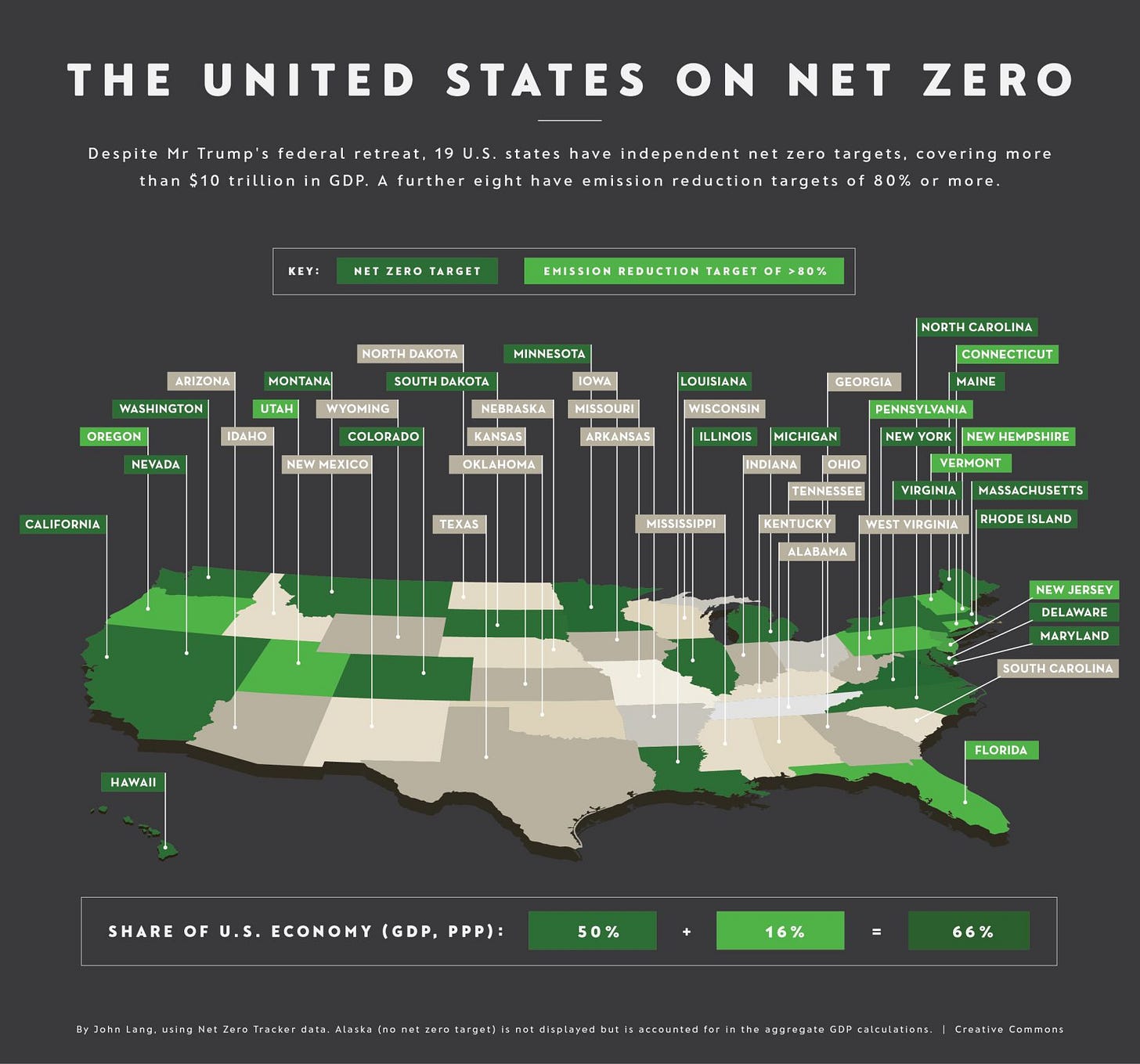Welcome to Carbon Risk — helping investors navigate 'The Currency of Decarbonisation'! 🏭
If you haven’t already subscribed please click on the link below. By subscribing you’ll join more than 5,000 people who already read Carbon Risk. Check out the Carbon Risk backstory and find out what other subscribers are saying.
You can also follow on LinkedIn, Bluesky, and Notes. The Carbon Risk referral program means you get rewarded for sharing the articles. Once you’ve read this article be sure to check out the table of contents [Start here].
Thanks for reading Carbon Risk and sharing my work! 🔥
Estimated reading time ~ 8 mins
“In the midst of chaos, there is also opportunity”
― Sun-Tzu
President Trump issued four executive orders on Tuesday exploiting the declaration that America is experiencing an “energy emergency”.
The first allows older, less efficient coal-fired power plants, previously scheduled for retirement, to remain open. The second imposes a moratorium on policies introduced under the Biden Administration curbing the profitability of coal plants. The third focused on promoting grid security and reliability, and ensuring a continued role for coal-fired generation.
The fourth - PROTECTING AMERICAN ENERGY FROM STATE OVERREACH - aims to block the enforcement of state laws that reduce the consumption of fossil fuels while also curbing their emissions. At the White House signing event, sat in front of a group of miners in hard hats, Trump declared that he would slash “unnecessary regulations that targeted the beautiful, clean coal.”1
If successful the order would be catastrophic for America’s carbon markets: California’s Cap-and-Trade Program, Washington State’s Cap-and-Invest Program, and the Regional Greenhouse Gas Initiative (RGGI) covering eleven US states in the north east. It would also sign the death knell for other states contemplating their own emission trading schemes such as New York, Vermont, Pennsylvania, and Maryland (see What's in a [carbon market] name? Why governments should adopt the 'Cap-and-Invest' nomenclature).
Thankfully, the executive order is very unlikely to achieve it’s aims. The US Constitution’s 10th Amendment grants states the authority to set their own rules in areas where the federal government has not acted, according to Amy Turner at the Sabin Center for Climate Change Law at Columbia Law School, and neither “the president nor Congress can amend the Constitution nor change the legal doctrines that help courts interpret it.”2
But it doesn’t mean that America’s carbon markets will come out of this episode unscathed. The executive order indicates that a report is due within 60 days outlining what executive or legislative actions will be taken, and although it gives little away, Turner believes that “it is likely a forerunner to litigation, law-making, or the withholding of federal funds.” If it’s the former, she expects a “significant chilling effect on local climate policy innovation.”
Although the share of the global economy covered by national level commitments to net zero has shrunk from 93% to 78% following Trumps decision that the US will exit the Paris Agreement, Net Zero Tracker calculates that once you account for state policies that only falls to 84%. Nineteen states, accounting for 50% of US GDP, are independently committed to net zero, while a further eight states have emission reduction targets of 80% or more (see It's the climate, stupid!).3
To their credit, states that consider themselves among those with ambitious climate policies have not kept silent amid the vitriol thrown their way. The US Climate Alliance - a bipartisan coalition of 24 governors including those representing state-led climate action by California, Washington, and New York - issued a joint statement in response to the executive order, affirming that they would not be deterred by the executive order:4
“The federal government cannot unilaterally strip states’ independent constitutional authority. We are a nation of states — and laws — and we will not be deterred. We will keep advancing solutions to the climate crisis that safeguard Americans’ fundamental right to clean air and water, create good-paying jobs, grow the clean energy economy, and make our future healthier and safer.”
However, it was California in particular that was singled out by Trump’s ire, for in the words of the executive order, punishing fossil fuels by “adopting impossible caps on the amount of carbon businesses may use, all but forcing businesses to pay large sums to “trade” carbon credits to meet California’s radical requirements.”




